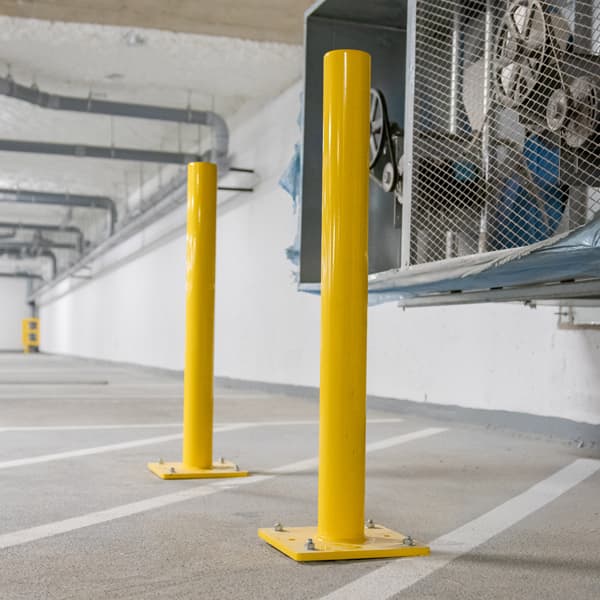
In today’s bustling urban environments, accidental impacts can occur more frequently than we’d like to admit. That’s where bollards step in as unsung heroes, offering invaluable protection for buildings and equipment. These sturdy, vertical posts are strategically placed to absorb and deflect potential collisions, serving as a first line of defense against vehicles or heavy machinery veering off course. By acting as a reliable barrier, bollards help prevent costly and potentially dangerous accidents, ultimately safeguarding both structures and valuable assets.
One of the primary benefits of bollards lies in their ability to shield building doorways from accidental damage. Whether due to distracted driving or unforeseen circumstances, vehicles can inadvertently collide with entry points, potentially compromising structural integrity and leading to costly repairs. Bollards act as a physical barrier, absorbing the impact and effectively preventing such incidents. Their presence provides peace of mind to property owners and occupants, knowing that their building’s vulnerable areas are fortified against unintended collisions.
Furthermore, bollards are constructed with durability in mind, ensuring they withstand the test of time and remain effective even under extreme conditions. Made from robust materials like steel or concrete, bollards are engineered to absorb and dissipate kinetic energy upon impact. This means they not only protect against immediate damage but also serve as a long-term investment, minimizing the need for frequent replacements. With proper maintenance, bollards continue to provide reliable protection for years, offering a cost-effective solution for property owners looking to safeguard their buildings and equipment.
In addition to their protective function, bollards are designed with practicality in mind. They can be seamlessly integrated into various architectural styles and environments, blending effortlessly with their surroundings. Additionally, many bollard models are engineered for easy installation, with options for surface mounting or embedding directly into the ground. This versatility ensures that property owners have the flexibility to choose the most suitable bollard solution for their specific needs.
In conclusion, bollards play a critical role in fortifying buildings and equipment against accidental impacts. Their robust construction, combined with strategic placement, offers a reliable defense against potential collisions. With the added benefits of durability and practicality, bollards stand as an indispensable asset in safeguarding valuable assets and ensuring the long-term integrity of structures in urban environments.
